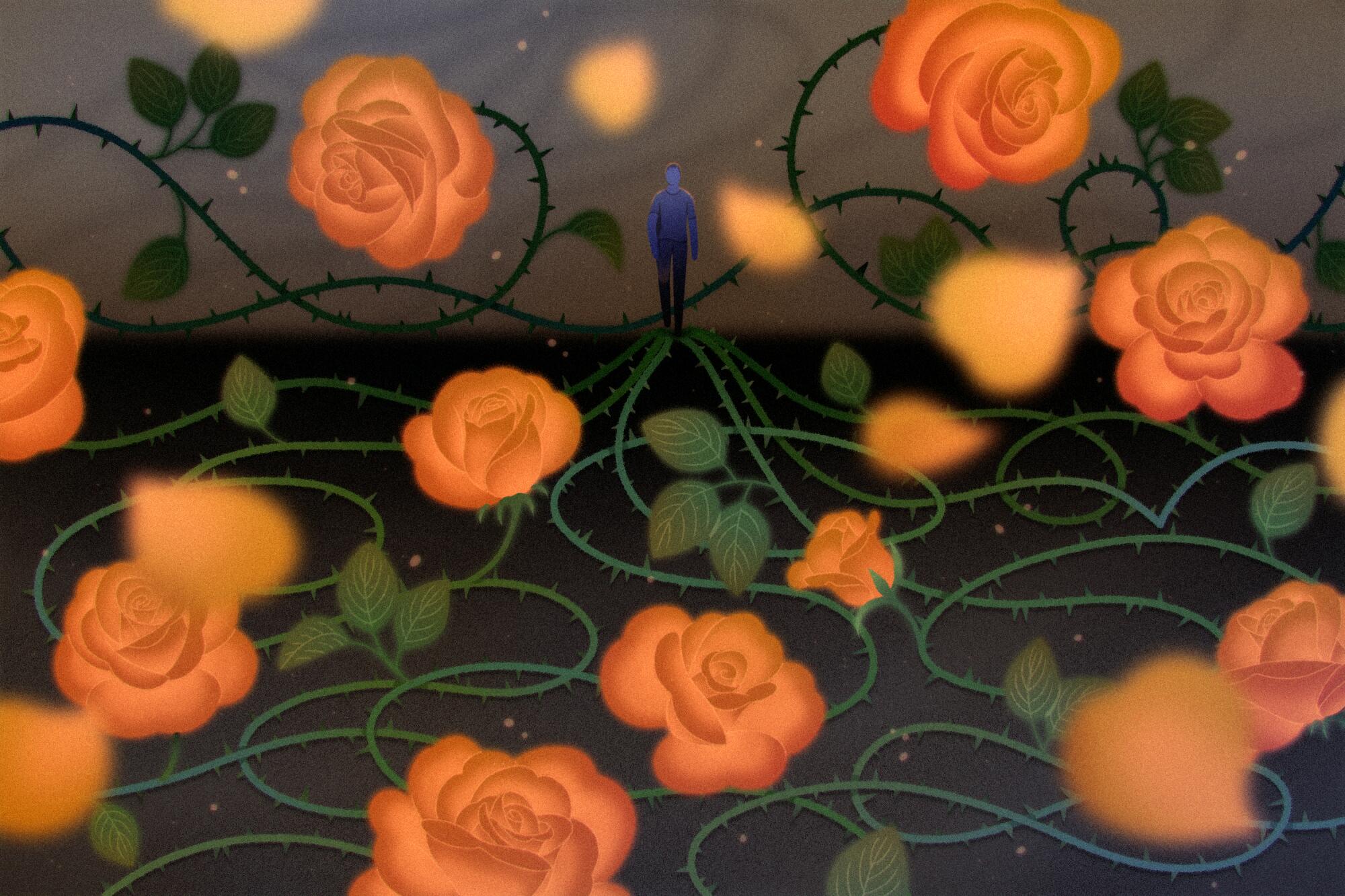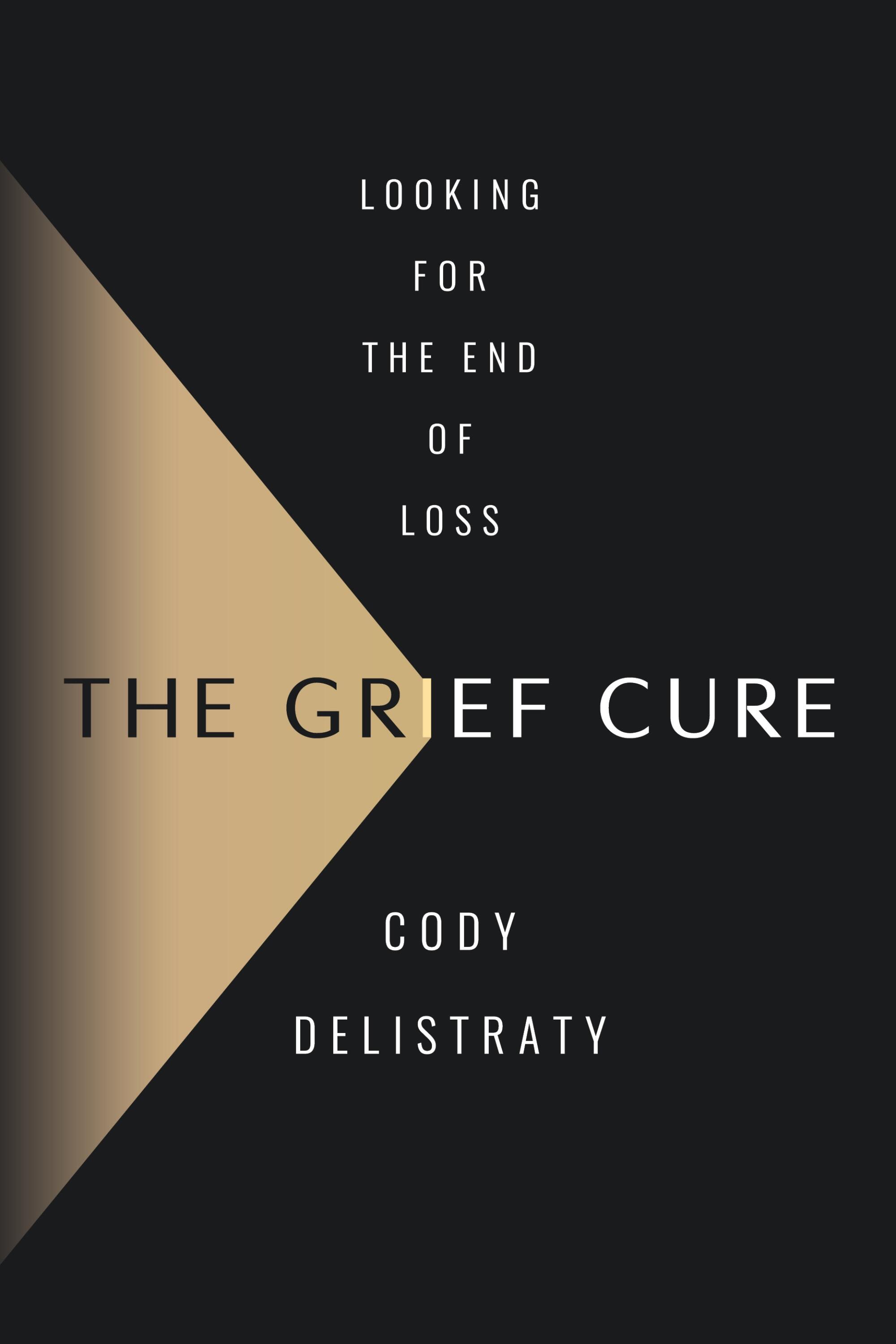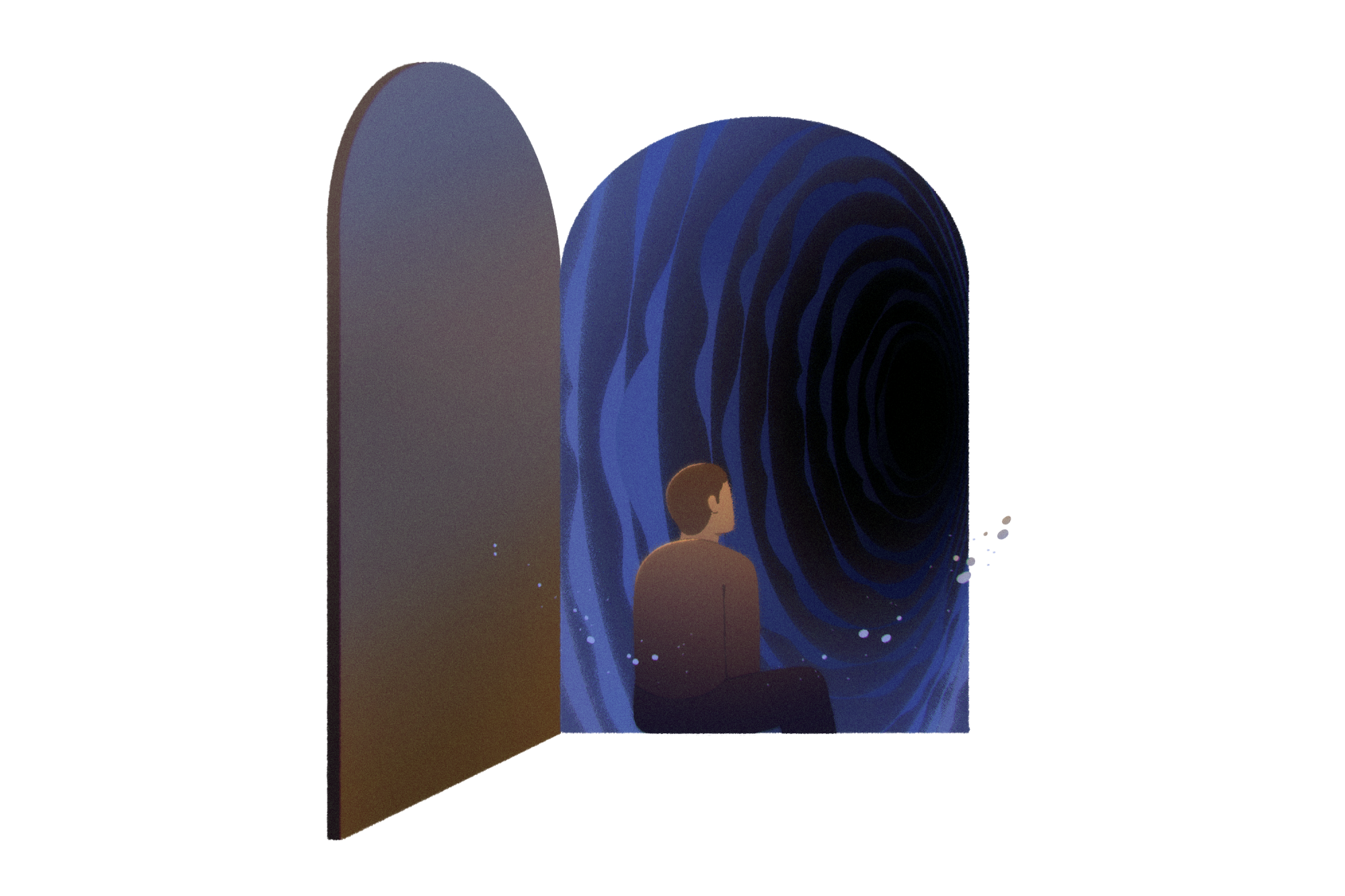
In ‘The Grief Cure,’ Cody Delistraty explores cultural, historical and scientific approaches to grieving
- Share via
When Cody Delistraty lost his mother in 2014, he was surprised by the various ways that he, his brother and his father dealt with their grief. The journalist and speechwriter had expected his family’s experiences to be aligned, that there would be a, “homogeneity to grieving.” The differences led Delistraty to wonder whether loss was more complicated than advertised.
In America, grief is often framed as a journey from Point A to Point B, a linear path efficiently chugging through stages like denial and anger, ultimately heading toward acceptance. But anyone who has experienced a loss firsthand understands that it isn’t so simple. Grief can be isolating, confusing and unyielding.
Shelf Help is a wellness column where we interview researchers, thinkers and writers about their latest books — all with the aim of learning how to live a more complete life.
In 2022, a new addition to the DSM-5 (“Diagnostic and Statistical Manual of Mental Disorders”) caught Delistraty’s eye: prolonged grief disorder. It’s a rare condition in which grief becomes so severe that it interferes with daily life. The classification opens the door to medical solutions; a pharmaceutical is in early testing stages. More broadly, with grief of all kinds, a slew of new digital, psychedelic and other treatments are emerging.
Delistraty’s new book, “The Grief Cure: Looking for the End of Loss,” (Harper) follows his inquisitive sampling of available and future therapies, all while wondering whether grief is a problem that needs to be solved.
Your understanding of grief initially centered on a concept known as the five stages: denial, anger, bargaining, depression and acceptance. How did that shift?

When Elisabeth Kübler-Ross came up with the five stages, she was talking to patients who were coming to terms with their own deaths, not with their own grief, which is similar but also very different. There was a study that tracked grievers from various demographics and found that most people actually experience a progression, but my issue with the typical interpretation of the five stages is that it’s presented as the right way to grieve, that there’s a method you can master and that the end game is acceptance.
America has a culture of individuality and mastery — we want to achieve, we want to overcome, we want to bootstrap our way to success. But in grief, we only set ourselves back trying to do this. After a loss is the time to pause and reflect, and even if you do go through these stages to some degree, trying to rush through them or extract value in order to get to acceptance and move on is a fundamentally wrong way of looking at it.
“America has a culture of individuality and mastery — we want to achieve, we want to overcome, we want to bootstrap our way to success. But in grief, we only set ourselves back trying to do this.”
— Cody Delistraty, author of “The Grief Cure.”
Your book confronts the isolation of grieving and how it’s so often considered unseemly or inappropriate when done publicly. Grief is culturally framed as an individual journey, and yet it’s a universal fact of life. What do you think accounts for this disconnect?
This paradigm shift from public to private grieving is a relatively recent phenomenon. Americans, especially, are weary of talking or asking about loss. This is a symptom of “happiness culture,” where grief is considered a burden and you don’t want to seem unhappy or bring others down. The disintegration of local communities exacerbates this. And then this false idea that closure marks a victory over grief. Keeping grief private implies that you did your job. There’s morally valuable willpower. You did it. You got over it.
I think self-care has been the problematic marketing breakthrough of the 21st century, in which the more challenging aspects of being a human, like disappointment, sadness and grief, get pushed out of the frame. They’re not within our consumption narrative, and they’re not within the way we want to present to others.
What surprised me while researching is that it seems like people are actually bubbling with the desire to talk about these things. When I was researching for the book, I got sick of holing up in hotels, so I went to a bar and ended up talking with someone who told me about her recent divorce, which she called the greatest loss of her life. She hadn’t really talked to anybody about it, and it was so nice to connect over loss. When people are open, it can snowball into greater openness.
Our society can place varying value on different types of loss, resulting in some to fall through the cracks, like that woman with her divorce. But grief exists on a spectrum. In the book, you discuss ambiguous loss. Can you tell me more?

The term ambiguous loss was coined by Pauline Boss at the University of Minnesota, who worked with the families of soldiers who went missing in Vietnam. Boss defined it as “a relational disorder caused by the lack of facts surrounding the loss of a loved one,” but today, it encompasses a wide variety of loss.
Climate grief is a big and very modern one. There was a European study that found a third of respondents are extremely worried about climate change. That’s a huge instance of ambiguous grief because there’s disappearance of species and landscapes, there’s an increase in climate refugees, but you can’t really point to a body in a casket and say this is what I’m grieving.
Relationships are another big example. In the book, I went to breakup boot camp to explore losing a loved one outside of death. Friend breakups can be devastating. I really push against the idea of hierarchies and grief. There isn’t a fundamental ranking within grief, and it is subjective to the relationship you had to that person or thing.
Your experiences brought you to the cutting edge of grief research. What do you make of the future of grief treatments?
When I was writing the AI [artificial intelligence] chapter of re-creating technologically deceased loved ones, it was super cutting-edge and wild. Then, of course, it all hit the news cycle pretty intensely with Chat-GPT. Optogenetics for memory deletion could be something we’re faced with in another decade or two. There will be medical technologies where we can take a lot of the pain and burden out of loss. My book questions whether that’s really for the best. We should be thinking about this now before the time comes.
TAKEAWAYS
from “The Grief Cure”
Psilocybin is a huge scientific breakthrough for grief. I talked to one of the most renowned psilocybin researchers, Robin Carhart-Harris, who told me about this guy, Kirk Rutter, whose mother had died, he’d been in this terrible car accident and then he went through a romantic breakup all in the span of about a year. Carhart-Harris’ team gave him just two pills of synthesized psilocybin, donned him with an eye mask and calm music, and he had this incredible perspective shift. He cycled through memories of his mom and realized he didn’t have to maintain the most painful parts, but he could still hold onto her and respect her memory. That treatment made him look at grief differently.
What is your best advice for somebody really stuck in their grief?
There’s no right way of doing it, but don’t rush it. As awful as this time is, there’s so much to be gleaned from really looking inward, reflecting on yourself and your feelings, and thinking about the person you’ve lost. I rushed after my mom died, trying to push past the pain, and here I am, a decade later, writing a book about it. These things really do take time.
I also recommend telling your people what you need from them. The vast majority of people want to talk about these things, they want to be helpful, but especially in the U.S., we are very bad at knowing what that looks like. To the degree that you can, communicate your needs. I think you’d be surprised by the degree to which people will be there for you.
Should someone in grief be aiming for closure?
I think closure is a mythical idea. Nancy Berns, a professor at Drake University, has done a lot of great work on closure and how it’s a social construct. We too often skip over the grappling-with and reflecting-on of grief in order to get to this mythical place of closure when really the truest value is being able to hold that loss in one part of your life while holding a future-looking part in another.
We see this push for closure reified across American culture. One of the biggest shocks for me was bereavement leave, where the median is only five days according to a 2024 study, and this only applies to a close family death. There’s no U.S. federal law requiring leave. This bolsters the idea that closure is part and parcel of productivity, of getting back to normal, of getting back to work.
Our rituals around grief are one-off. We go to a funeral, and that’s it. You get support for an hour, and then it’s over. We’d do well to really reflect on more personal, creative rituals that have more intimate meaning and can be continued over a longer period. This shift would help people with the understanding of time lines around grief. It all takes so much longer than we think. You miss so much when you rush through to tick the box of closure, and frankly, when you do so, you’re really not grieving at all.

Endicott is a writer and multi-disciplinary artist based in Denver. Her work has appeared in a number of publications including the New York Times, Scientific American, the Guardian, Elle, Electric Lit and Bomb Magazine. You can find her on Instagram @weirdbirds.
Shelf Help is a new wellness column where we interview researchers, thinkers and writers about their latest books — all with the aim of learning how to live a more complete life. Want to pitch us? Email alyssa.bereznak@latimes.com.
More to Read
Sign up for The Wild
We’ll help you find the best places to hike, bike and run, as well as the perfect silent spots for meditation and yoga.
You may occasionally receive promotional content from the Los Angeles Times.












